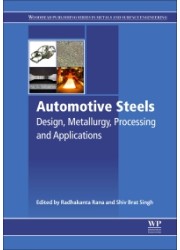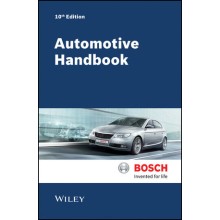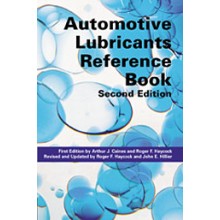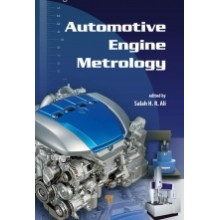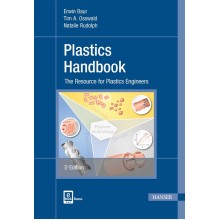Automotive Steels: Design, Metallurgy, Processing and Applications
ISBN: 9780081006382
Author: Radhakanta Rana Shiv Brat Singh
Dispatch Time: 15 - 30 Days
Our Price: $202.50
Discount : 10%
Quantity:
-
Add to Compare
Automotive Steels: Design, Metallurgy, Processing and Applications explores the design, processing, metallurgy, and applications of automotive steels. While some sheet steels are produced routinely in high volume today, there have been significant advances in the use of steel in the automotive industry.
This book presents these metallurgical and application aspects in a way that is not available in the current literature. The editors have assembled an international team of experts who discuss recent developments and future prospects for automotive steels, compiling essential reading for both academic and industrial metallurgists, automotive design engineers, and postgraduate students attending courses on the metallurgy of automotive materials.
Table of Contents
- List of contributors
- 1. Design of auto body: Materials perspective
- Abstract
- 1.1 History of steel usage in vehicle body structures and closures
- 1.2 Significant events in history impacting steel application in vehicle design
- 1.3 Breakdown in vehicle by material mass and application
- 1.4 Improved safety and fuel economy: current regulations
- 1.5 Vehicle energy losses and contribution to fuel economy through mass reduction
- 1.6 Summary
- References
- 2. Steels for auto bodies: A general overview
- Abstract
- 2.1 Steel grades and design strategy for auto body applications
- 2.2 Steel’s contribution to fuel economy through mass reduction
- 2.3 Recent body structure & closures production applications
- 2.4 Manufacturing concerns
- 2.5 Future steel technology
- 2.6 Sustainability/life cycle assessment
- 2.7 Summary
- References
- 3. Formability of auto components
- Abstract
- 3.1 Introduction
- 3.2 Basic concepts
- 3.3 Advanced process analysis
- 3.4 Basic concepts
- 3.5 Advanced process analysis
- 3.6 Forming processes
- 3.7 Formability aspects of different steels
- 3.8 Conclusions
- Acknowledgments
- References
- 4. Physical metallurgy of steels: An overview
- Abstract
- 4.1 Introduction
- 4.2 The iron-carbon phase diagram
- 4.3 Austenite
- 4.4 Ferrite and cementite
- 4.5 Steel microstructure: general considerations
- 4.6 Steel microstructures produced by diffusion: ferrite, pearlite, and bainite
- 4.7 Diffusionless transformation of austenite: martensite
- 4.8 Transformation diagrams and Jominy End Quench Curves
- 4.9 Summary
- References
- 5. Deep drawable steels
- Abstract
- 5.1 Introduction
- 5.2 Aluminum killed (AK) steels
- 5.3 Interstitial free (IF) and interstitial free high strength (IFHS) steels
- 5.4 Bake hardening (BH) steels
- 5.5 Summary and conclusions
- References
- 6. High strength low alloyed (HSLA) steels
- Abstract
- 6.1 History and definition
- 6.2 Structure–property relationships: effect of microstructure on the mechanical properties of HSLA steels
- 6.3 Fundamental metallurgical principles of thermomechanical processing
- 6.4 Examples of hot and cold rolled HSLA steels used in the transportation industry
- 6.5 Transformation behavior
- 6.6 Summary
- References
- 7. Dual-phase steels
- Abstract
- 7.1 Introduction
- 7.2 Effect of structure on mechanical properties of dual-phase steels
- 7.3 Obtaining dual-phase steels by transformations of austenite using controlled cooling from the intercritical region
- 7.4 Obtaining as-rolled dual-phase microstructure by cooling of deformed austenite
- 7.5 Effects of chemical composition on dual-phase steels
- 7.6 Application of dual-phase steels in modern cars
- 7.7 Summary
- References
- 8. TRIP aided and complex phase steels
- Abstract
- 8.1 Introduction
- 8.2 Processing route and microstructure
- 8.3 Alloy design
- 8.4 Microstructure modeling
- 8.5 Deformation-induced transformation of retained austenite
- 8.6 Mechanical properties
- 8.7 Press formability
- 8.8 Other mechanical properties
- 8.9 Summary
- References
- 9. Bake hardening of automotive steels
- Abstract
- 9.1 Introduction
- 9.2 Mechanisms of bake hardening response
- 9.3 Factors affecting bake hardening response
- 9.4 Bake hardening of multi-phase steels
- 9.5 Modeling
- 9.6 Effect of bake hardening on the performance of automotive steels
- 9.7 Summary
- References
- 10. Bainitic and quenching and partitioning steels
- Abstract
- 10.1 Introduction
- 10.2 Bainitic steels
- 10.3 Quenching & partitioning
- 10.4 Substitution of silicon by aluminum
- 10.5 Manganese alloying
- 10.6 Carbon alloying
- 10.7 Molybdenum additions
- 10.8 Competing reactions during partitioning
- 10.9 Local formability of bainitic and Q&P steels
- 10.10 Conclusions
- Acknowledgments
- Disclaimer
- References
- 11. High Mn TWIP steel and medium Mn steel
- Abstract
- 11.1 Introduction
- 11.2 High Mn TWIP steel
- 11.3 Medium Mn TRIP and TWIP+TRIP steel
- 11.4 Outlook for high Mn TWIP steel and medium Mn steel
- 11.5 Summary
- Acknowledgments
- List of abbreviations
- References
- 12. Hot formed steels
- Abstract
- 12.1 Introduction
- 12.2 Physical metallurgy of hot forming steels
- 12.3 Hot forming steels
- 12.4 Blank coatings
- 12.5 Typical automotive applications
- 12.6 Summary and future outlook
- References
- 13. Forging Grade Steels for Automotives
- Abstract
- 13.1 Introduction
- 13.2 Basic physical metallurgy relevant to hot forging
- 13.3 Evolution of microalloyed forging steels
- 13.4 Steels for automotive forging—the way forward
- References
- Index
Write a review
Your Name:Your Review: Note: HTML is not translated!
Rating: Bad Good
Enter the code in the box below:
Copyright © 2014 Engineering Standards Bureau. All Rights Reserved.
Developed By Zoom Into Web


